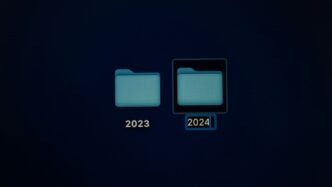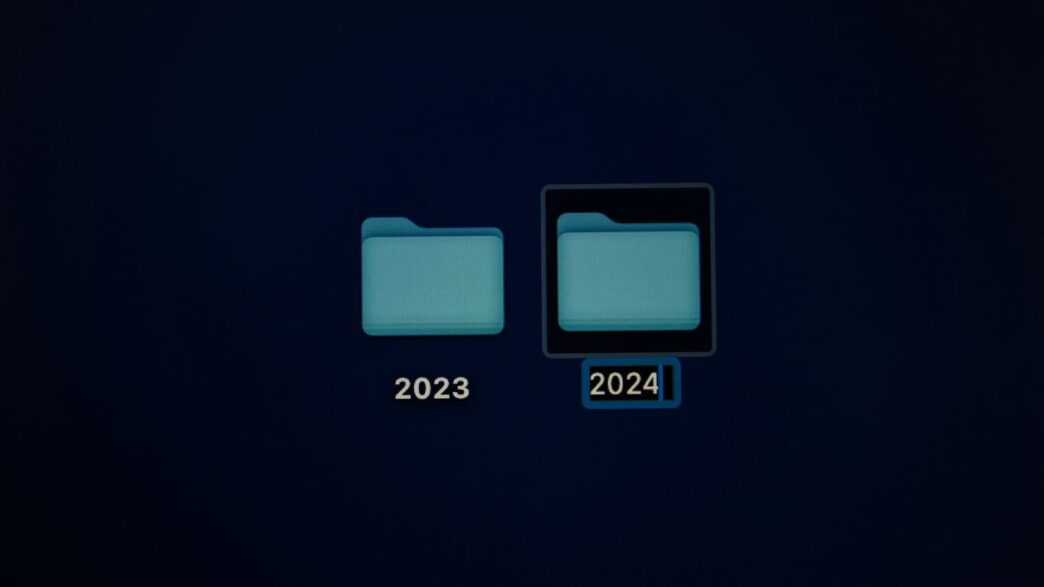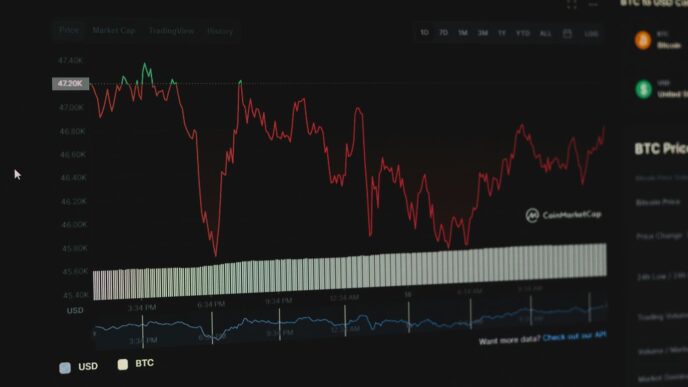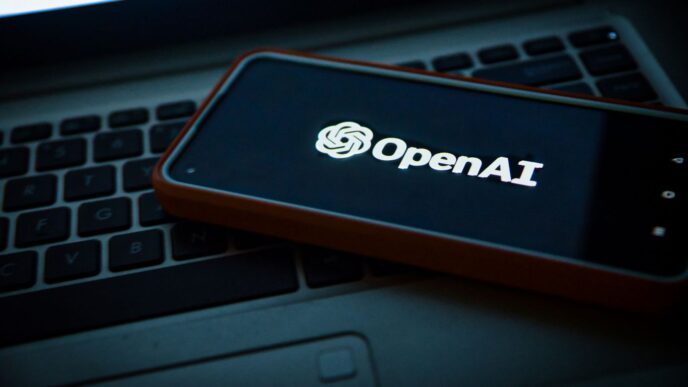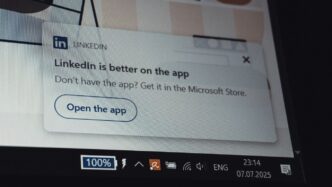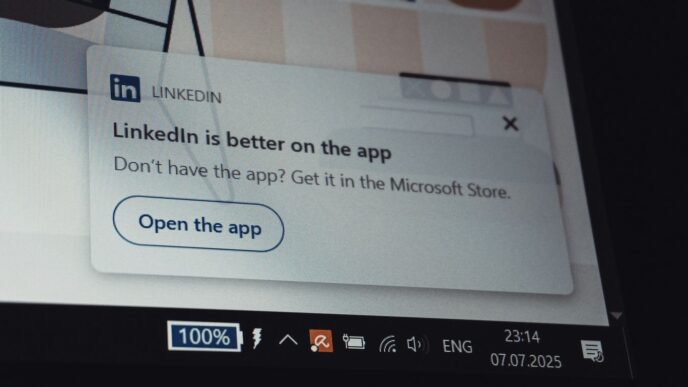Logos can say a lot about a tech brand, and the gizmodo logo is no exception. Over the years, this logo has changed quite a bit, moving with the times and reflecting shifts in tech culture. From its early, simple wordmark to the more refined and modern look we see today, the gizmodo logo has always tried to keep up with what’s cool in tech. Let’s take a walk through its different looks and see how this logo has grown up alongside the internet itself.
Key Takeaways
- The gizmodo logo started simple, focusing on clean lines and a tech-inspired font.
- As web design changed, the logo got sleeker and more polished, matching broader internet trends.
- Minimalism took over, with the logo losing extra details and sticking to basic colors and shapes.
- Mobile and social media pushed Gizmodo to make its logo more flexible and app-friendly.
- Community feedback and comparisons to other logos have shaped how people see the gizmodo logo today.
Origins and Early Designs of the Gizmodo Logo
The Launch of Gizmodo and Its Branding Vision
When Gizmodo went live in 2002, tech blogging was pretty much the Wild West. The founders wanted a sharp, recognizable name that would stand out in a quickly crowding space. The original branding felt almost experimental, but it was clearly designed to speak directly to gadget fans and early adopters. There wasn’t some big rollout with a fancy announcement, just a blog with tech news and a logo that said: “We’re in the game.”
Some early branding goals:
- Be instantly recognizable (even if the logo was simple)
- Fit effortlessly with the new digital culture
- Look like it belonged on a screen, not a print magazine
Initial Typography: Simplicity and Tech Influence
Right from the start, the Gizmodo logo used basic, bold type. No crazy scripts or complex icons—just clean lines, all-caps letters, and a straightforward attitude. Looking at the typography, you could tell the design drew inspiration from computer fonts and old-school LCD displays. The result was a text-heavy logo, which gave off a reassuring, tech-first vibe. There weren’t flashy mascots or wild experiments—just:
- Sans-serif fonts with slightly futuristic touches
- A focus on clarity over decoration
- A preference for grayscale or monochrome palettes (at least at first)
Table: Early Gizmodo Logo Typography Features
| Year | Typeface Style | Most Common Colors | Key Characteristics |
|---|---|---|---|
| 2002 | Bold, All-Caps | Black, Gray, Blue | Tech-inspired, minimal |
| 2004 | Rounded Sans-Serif | Blue, Gray | Clean, readable, modern |
Logo Placement and Digital Integration
Back then, most tech news sites slapped their logos at the top of web pages and called it a day, but Gizmodo started tweaking things early. They made sure the logo always had presence—big enough to recognize on any browser but never so large it overshadowed the headlines. Sometimes the logo doubled as a home button, reinforcing its place in the user journey. Even in its basic form, the logo was tailored for the web:
- Placed above the main navigation for max visibility
- Used as a clickable anchor to the home page
- Adjusted slightly in size and spacing as browser standards evolved
Gizmodo’s first logos weren’t flashy, but they worked, and they matched the digital energy of those first heady years in tech journalism.
Transitioning Through the Web 2.0 Era

The days of Web 2.0 reshaped everything about the online experience, and Gizmodo’s logo was no exception. This era, marked by a wave of smarter websites and user participation, demanded that brands adapt quickly. Gizmodo began rethinking its logo to better fit this new, interconnected digital landscape. As seen with the rise of other digital-first communities like architectural blogs, brand design in tech needed to feel more agile and interactive than ever before.
Adapting to a Sleeker Online Aesthetic
During this shift, Gizmodo’s logo lost some of its earlier chunkiness. Everything suddenly leaned toward looking cleaner and more modern—think smooth lines and less visual clutter. Here’s what changed:
- Rounded edges replaced boxy shapes
- More negative space made the logo easier on the eyes
- Logos were made to pop on both white and dark backgrounds
Early 2000s Font Choices in Tech Branding
Font choices in the early 2000s tell a story all their own. Companies ditched the dated, almost cartoon-like lettering for something that suggested progress and speed. Below is a look at how font attributes shifted, not just for Gizmodo, but across digital tech brands:
| Attribute | Pre-Web 2.0 Style | Web 2.0 Shift |
|---|---|---|
| Sans-serif Use | Occasional | Dominant |
| Boldness | Heavyweight | Lighter, more open |
| Letter Spacing | Tight | Moderately spaced |
Gizmodo’s logo started to feel right at home among the new breed of news and media sites that went live in this period.
Gizmodo Logo as a Reflection of Technological Optimism
Gizmodo wasn’t alone in this design glow-up. This was also the age of wild tech optimism—everyone was betting on rapid growth and endless possibilities. The logo needed to signal that, and here’s how it tried:
- Brighter gradient effects hinted at excitement for the future
- Streamlined shapes matched the hope for easier, more stylish gadgets
- The logo’s accessibility across different devices forecasted the coming boom of mobile and social platforms
People might remember the shift as subtle, but looking back, these moves made the logo feel more approachable—and quietly excited for what was next in technology.
Embracing Minimalism: A Turning Point for the Gizmodo Logo
Shifting Toward Flat Design Trends
Somewhere around the mid-2010s, Gizmodo’s logo began to look very different. The earlier glossy and shadowed styles, which once looked modern and fresh, started to feel out of place next to the cleaner designs appearing everywhere. The new trending look replaced gradients and reflections with simple, flat shapes—making the Gizmodo logo easier to spot at a glance.
- Flat design stripped away anything extra—no more futuristic glows or thick borders.
- Letterforms took on a sleeker, geometric look, keeping everything sharp and easy to read.
- Emphasizing clarity made the logo work better on all devices, from laptops to tiny phone screens.
This shift also echoed ideas from minimalism, where less is truly more. Entire branding strategies were being pared down to their most direct message—a topic often linked to the minimalism art movement.
Color Palette Evolution and User Experience
Over time, Gizmodo’s color choices drifted from busy and bright to something more muted and unified. This wasn’t about making the logo boring—just more adaptable, for all kinds of backgrounds and screens. Here’s how the color approach changed:
| Period | Main Colors | Accent Usage |
|---|---|---|
| Early 2010s | Bright blues, grays | Frequent highlights |
| Late 2010s | Monochrome, simple | Minimal accents |
| 2020s | Black/white, gray | Almost none |
- Using fewer colors means the logo draws less attention away from news and content.
- Backgrounds could change without clashing—a big deal once everyone started using dark mode.
- The unified palette also reduces loading times and errors on older browsers.
Influence from Broader Tech Industry Movements
Gizmodo didn’t switch to minimalism out of nowhere. Most tech brands were shaking things up at the same time:
- Apple dropped skeuomorphism, and suddenly the whole world craved flat buttons and icons.
- Google and Microsoft both redesigned their logos toward geometric, sans-serif fonts.
- Responsive design meant logos needed to look good at every size, from wristwatches to smart TVs.
Minimalist logos gained a reputation for feeling current and trustworthy. For readers, that meant Gizmodo stayed looking up-to-date—a small change, but one that made the whole site feel friendlier and more reliable. Minimalism, more than a trend, became the new default, separating icons from distractions and letting the site’s work speak for itself.
The Gizmodo Logo in the Age of Mobile and Social Media
The big shift to mobile and social apps meant tech brands like Gizmodo needed a logo that could work anywhere — from a tiny app icon on your home screen to a Twitter avatar. Even with all this change, Gizmodo managed to keep its mark recognizable, even as the web and tech culture itself moved at lightning speed.
Alignment with Mobile-First Design Principles
When smartphones became the main way people read articles, logos had to change. Gizmodo’s logo adapted, favoring bolder fonts and sharper contrast to stay visible on tiny screens. Some specific priorities in the logo redesign included:
- Making sure the logo was easy to recognize, even at very small sizes
- Using sans-serif typefaces, which looked cleaner on low-resolution (and later, retina) screens
- Simplifying all elements to avoid clutter, especially for app icons and quick loads
Adapting Brand Identity for Social Media Platforms
Social media made brand identity trickier, since your logo had to stand out in busy timelines and also look good in circles, squares, banners, and more. This required genuine effort:
- Logos had to be responsive — so one look for the profile photo, another for banners or posts
- The iconography shifted from long wordmarks to symbols or letter-based icons
- On platforms like Twitter and Instagram, Gizmodo kept its color scheme and geometric feel, but often used a simple “G” or the full word in condensed form
It’s interesting how tech branding now echoes other trends in youth culture. As social media continues to shape authenticity, younger audiences value brands that can flex, not just stay static.
Iconography and App-Ready Logo Refinements
For app stores and mobile operating systems, just a standard wordmark wasn’t enough. Gizmodo’s approach included:
- Creating a stacked version of the logo for vertical app tiles
- Picking colorways that wouldn’t get lost against dark or light backgrounds
- Testing the logo on various screen sizes and OS versions, making sure nothing broke
Snap Look: Gizmodo’s Logo Evolution on Mobile
| Year | Logo Characteristic | Mobile/ Social Focus |
|---|---|---|
| Early 2010s | Bold, single-color text | Quick recognition, app icon test |
| Mid 2010s | Flatter, simpler "G" | Avatar-friendly, high contrast |
| 2020s | Adaptive, variable logo | Responsive for all platforms |
The point is, Gizmodo’s logo story is also the story of how brands keep up with tech itself. The logo had to be ready for the realities of mobile, just like all of us had to learn new ways to connect every year as platforms exploded or faded away.
Controversy and Creativity: Reader Reactions to Brand Imagery
When it comes to online brands like Gizmodo, their logo is more than just a simple graphic. Over the years, the Gizmodo logo has sparked plenty of conversations—some supportive, some critical—which is exactly what you’d expect from such a recognizable tech outlet. Let’s break down how Gizmodo fans and critics have responded every time the site’s brand got a face-lift.
Notable Comparisons and Social Media Commentary
Whenever Gizmodo has refreshed its logo, social platforms light up with hot takes. Fans have an uncanny eye for design similarities, often comparing the new look to everything from competing tech brands to pop culture symbols. This isn’t unique to Gizmodo; even the famous Airbnb rebrand caught flak for logo similarities and unintended shape associations (Gizmodo’s commentary on the debate).
Here’s what usually happens after a new logo drops:
- Twitter erupts with memes pointing out resemblances—sometimes spot-on, sometimes a stretch.
- Reddit threads spark debates over whether the change was actually needed.
- Photoshop battles begin, reimagining the logo in wild and funny ways.
While some comparisons are harsh, others inject much-needed humor into logo discussions, making brand changes feel like big online events.
Cultural Interpretations of Logo Symbolism
Logos aren’t just designs—they carry meaning. Readers from different regions or backgrounds often see the same logo in surprisingly different ways. This leads to interpretations that the original designers might never have considered. Here are some cultural takes you’ll spot in user comments:
- Some see modernity and progress, tying sleek fonts to the tech world’s cutting-edge reputation.
- Others link color choices to broader tech trends (for example, blue hues for trust), echoing what’s seen in icons of companies shaping future tech like Virgin Galactic’s latest launch.
- There are always folks who spot shapes and letters resembling unrelated symbols, from gadgets to emojis, adding another layer to logo lore.
These diverse responses keep the brand’s identity buzzing with new meaning every cycle.
Engaging the Community Through Branding
What’s really interesting is how Gizmodo taps into these reactions to connect with its audience. Rather than shying away from feedback, the brand sometimes leans into the chatter:
- Polling readers after a redesign (“Which logo do you prefer?”).
- Spotlighting the best user-generated remixes or parodies of their logo.
- Publishing Q&A sessions with their own designers, breaking down each creative choice.
This openness turns logo updates into two-way conversations, giving fans a sense of ownership and inviting them inside the branding process. Over time, this not only strengthens loyalty but also sets an example for other tech sites in how to handle criticism with wit, honesty, and a touch of self-deprecation.
In the crowded world of tech, where every detail gets scrutinized, Gizmodo’s willingness to let readers in on the fun actually makes their brand more memorable—and more resilient.
Contemporary Gizmodo Logo: Standing Out in a Crowded Tech Landscape
The Gizmodo logo sits in a space where it needs to pop out, but it can’t become unrecognizable. Striking this balance means taking some risks, but never abandoning what makes the brand familiar to readers. Gizmodo’s approach is actually pretty strategic:
- They use a typography style that hints at their tech focus, but it’s not too shouty or trendy—so it still feels like, well, Gizmodo.
- Placement is almost always at the top and uncluttered—super important when every site is busy fighting for your attention.
- Even in changing colors or adding small flourishes, Gizmodo keeps things limited, which prevents the logo from feeling out of place on a crowded homepage or mobile app.
That middle ground—distinct but stable—helps the site keep long-time fans and welcome the new, without confusion.
Competitive Analysis with Other Tech Logos
It’s tough to stand out in tech. Everyone seems to pick a blue, gray, or black logo (think Twitter, Dell, Lenovo, and so on). What sets Gizmodo apart? Let’s look at a quick table for comparison:
| Brand | Main Color | Font Style | Icon Presence |
|---|---|---|---|
| Gizmodo | Light blue | Rounded sans | None |
| CNET | Red | Rounded bold | Some usage |
| Engadget | Blue/Black | Thin sans | Small icon |
| The Verge | Gradient | Geometric | Large icon |
This table shows just how minimalist Gizmodo is—no big icon, just the name, but that choice actually makes it stand out when other sites often lean on symbols, weird shapes, or color gradients.
Modern Gizmodo Logo as a Statement on Digital Culture
Logos don’t just say who you are—they sort of timestamp an era. The current version of the Gizmodo logo almost seems like a response to the clutter and noise online. It’s straightforward, and even kind of stripped back:
- The lack of an icon means you focus only on the word. Somehow, this feels honest—like, "Here’s who we are."
- Subtle changes to the palette over time show an awareness of trends, but never total surrender to them.
- Compared to the wild algorithmic logos like those from MIT Media Lab, Gizmodo’s does the opposite: Instead of endless variations, they’ve stuck with one style and trust it’ll hold up.
When every other tech brand seems to zig (bigger, bolder, sometimes confusing), Gizmodo zags—choosing clarity over chaos, which ends up being memorable in a different way.
Wrapping Up: Gizmodo’s Logo and What It Says About Tech
Looking back at the Gizmodo logo over the years, it’s kind of wild to see how much a simple design can say about a brand. The changes weren’t always huge, but each tweak matched the vibe of the tech world at the time. Sometimes it was bold and futuristic, other times it felt more stripped down and straightforward. That’s the thing with tech logos—they’re always trying to keep up with what’s cool, but also what feels familiar. Gizmodo’s logo journey is a reminder that even the smallest details, like a font or a color, can shape how we see a company. In the end, it’s not just about looking good. It’s about showing where you fit in a world that’s always changing. And honestly, that’s what makes following these branding shifts so interesting. Who knows what the next version will look like, but you can bet it’ll have something to say about where tech is headed.
Frequently Asked Questions
Why has the Gizmodo logo changed so many times?
The Gizmodo logo has changed over the years to keep up with new trends in design and technology. As the internet and tech world grew, Gizmodo wanted its logo to look modern and fresh.
What inspired the first Gizmodo logo?
The first Gizmodo logo was simple and used a basic font. It was inspired by early tech brands that liked clean, easy-to-read designs. This helped people quickly recognize the brand online.
How did social media affect the Gizmodo logo?
As more people started using phones and social media, Gizmodo made its logo easier to see and use on small screens. The logo became simpler and worked better as an icon for apps and social profiles.
Did readers ever dislike a new Gizmodo logo?
Yes, sometimes readers didn’t like a new logo right away. People shared their opinions on social media, making jokes or comparing the logo to other brands. Over time, most people got used to the changes.
How does the Gizmodo logo stand out from other tech websites?
Gizmodo tries to balance being unique with being easy to recognize. The logo uses simple shapes and colors, but the style is different enough to catch your eye among other tech brands.
What can we learn from the evolution of the Gizmodo logo?
The changes in the Gizmodo logo show how brands need to adapt to new technology and what people like. A good logo should work on all devices, be easy to remember, and match the brand’s personality.

